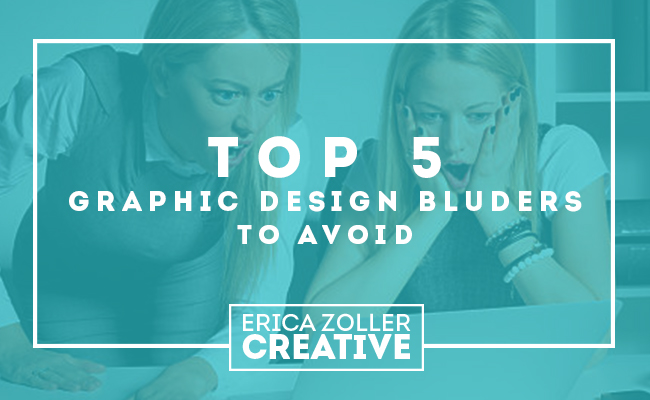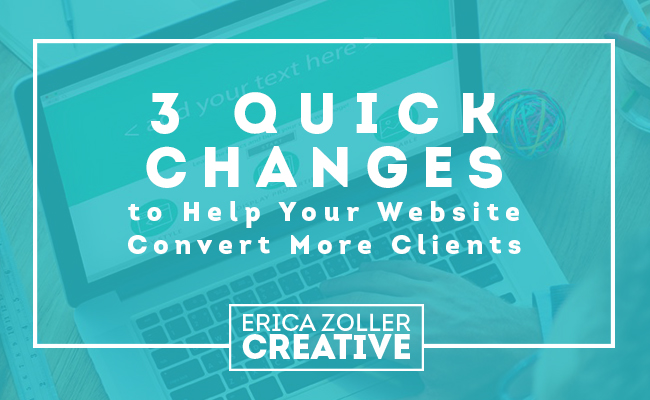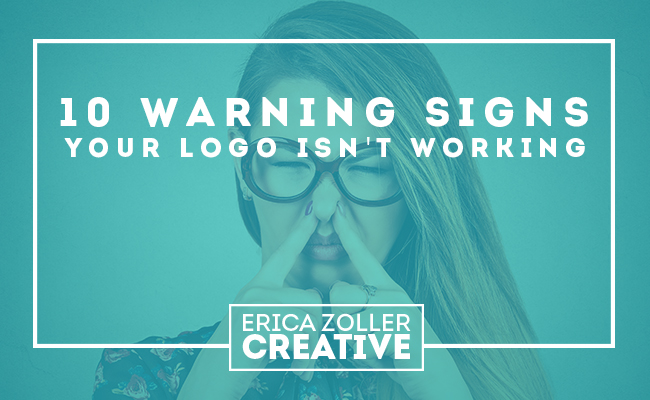With an increase in advertisements, social reach, websites, and communication tools, it’s easy to overlook some essential graphic design rules. Don’t miss out on gaining a new client or converting your ad into a sale because of simple mistakes! The information below goes beyond stretching logos and using bad fonts (which are big no-no’s) and aims to help you think about what you communicate in your design is just as important as how it looks. Below are 5 of the top graphic design blunders to avoid and how to fix them:
1.) MISSING BASIC INFORMATION
I hate to state the obvious, but I can’t tell you how many times I’ve seen an invitation, advertisement, or publication that fails to give the most important information necessary for someone to take action or get involved! If you are having a barbecue at your home, but forget to put the time and the date on the invitation – you’re not only confusing your guests, but creating MUCH more work for yourself on the back-end in having to communicate details to each person on your guest list!
TIP: Always make sure you’re addressing the who, what, where, when, (sometimes the why), and an action step. Once you’ve clearly communicated the details, make sure there is a next step: website, phone number, RSVP, click, etc. Don’t assume people know what to do next!
2.) INCONSISTENT DESIGN
As business owners, we are using many platforms to communicate and advertise. If your Facebook cover photo and profile pic don’t match your website design, which doesn’t match your business card, which doesn’t match your Instagram account (…you get the point), you are in a brand identity crisis! It may take a while to train your followers, but consistency is crucial in establishing brand trust.
TIP: Use your logo, brand colors, and typography consistently on all your platforms. That way any time someone sees your ad, website, or materials, it’s unmistakably yours!
PRO TIP: Have a graphic designer create a branding standards guide or package for your business. This guide will be invaluable in creating color schemes, proper use of logo, how to use photos (and what the photos look like), typography guidelines, and aesthetic elements that will help keep your brand consistent across all platforms and collateral.
3.) COPY CAT GRAPHICS
More than likely, you are looking at others in your field who are killing it with their branding – and if you aren’t, you should be! You should not (I repeat, SHOULD NOT) copy your competitors look. It’s easy to fall into the thinking that it could help boost your own brand, or that you won’t get caught. Truth be told – it’s dishonest and it’s stealing. It’s dishonest because it breaks trust with your audience who has most likely seen your competition and KNOW you are piggybacking on their brand.
TIP: Find out what makes you unique and sets you apart from your competitors. Think of it as visualizing your personality. Most likely, you live in a different area (which means different clientele), you have different beliefs/ethics (which means different clientele), or you sell a product that is different from your competition (which means different clientele). What works for someone else most likely won’t work for you!
4.) THE KITCHEN SINK
Opposite of missing basic information, there are only so many things you should communicate in your design. Less is more. Consider Target, Apple, Nike, etc. Target could have easily incorporated home furnishings, groceries, and apparel into their design, but they chose one of the most recognized symbols in North America – a bulls-eye. A 2003 Target study found more than 96 percent of American shoppers knew what the bold, red bulls-eye represents! Basically, Target is telling you they have exactly what you need – so certain in fact, they are willing to bet the small circle at the center of a target you will find something (if not more than) you need! Too many fonts/colors/images…overkill!
TIP: Communicate at a caveman level. Good design should give you just enough information to take action, then provide more details once they’ve taken their next step! Your logo should be clean and make sense without you having to explain it to someone. Break it down to a base level anyone can understand.
5.) YOU’RE BRAND BLIND
This is always a difficult subject to discuss because if you knew your brand/design was bad – you wouldn’t be blind to it, right?! Logos and graphic design are very personal to a business owner, so I will tread as lightly as I can… If your design isn’t gaining traction, and you’ve done all of the recommended tips above, your brand might be outdated, bad, or unappealing to your target audience. Your business is judged within 7 seconds of seeing it. Don’t lose potential relationships because of bad design.
TIP: Have a professional graphic designer evaluate your brand. I used to encourage clients to have someone they know and trust review their design – but nine times out of ten they would just tell the business owner what they wanted to hear. A graphic designer is trained to review your art with numerous things in mind: Is the hierarchy of text correct? Does the design have balance? Will someone who is colorblind be able to read it (I know, right?!)? A graphic designer’s responsibilities go far beyond just “looking good”; we’re here to ensure good design principles are in practice.
Not sure where to start? Does your brand need to be established, cleaned up, or reviewed? We’re here help you no matter where you are in the process! Contact us today to schedule a one-on-one consultation!


